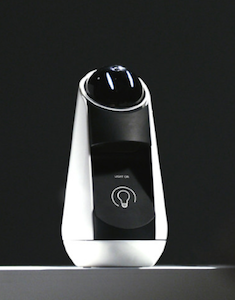 At this week’s Mobile World Congress in Barcelona, many smartphone makers have unveiled strategies to spare users from constantly staring down at their screens. According to an article in BGR by Chris Smith, both LG and Samsung quote data showing the average smartphone user checks the screen around 150 times a day. While some companies are going the route of designing always-on displays to allow faster access to on-screen information, Smith noted that Sony’s products are signaling an alternative approach.
At this week’s Mobile World Congress in Barcelona, many smartphone makers have unveiled strategies to spare users from constantly staring down at their screens. According to an article in BGR by Chris Smith, both LG and Samsung quote data showing the average smartphone user checks the screen around 150 times a day. While some companies are going the route of designing always-on displays to allow faster access to on-screen information, Smith noted that Sony’s products are signaling an alternative approach.
Sony demoed two new products in the Xperia line that rely on voice control. Neither product is available yet for purchase. Xperia Ear is an intelligent wireless earbud and Xperia Agent is an early-stage prototype of an in-home stationary, multifaceted talking device reminiscent of Amazon’s Echo.
With Xperia Ear, Sony is entering the still-early market for smart wireless earbuds. The Xperia Ear comes with a companion app that controls an intelligent assistant. The user can configure the app and then use voice commands to ask for a specific music track, hear news or weather information, make a call, or listen to or dictate text messages. Sony has posted a short promotional video of the Xperia Ear in action:
Xperia Agent, still in the product “concept” phase, is an in-home connected voice-enabled intelligent assistant with social robot qualities. Alex Dobie wrote about Xperia Agent for Android Central and provided a link to a video of the product demonstration. Xperia Agent will be able to listen for commands, control connected devices in the home, and provide information from the web.
Though the concept device has some physical similarities to Amazon’s Echo, it differs in the fact that it has a round screen resembling a head and two illuminated eyes. This design imbues the Xperia Agent with a creature-like quality that pushes it into the social robot category. Another interesting feature is the Agent’s ability to project images onto a wall.
The day when we stop staring at our smartphone screens probably isn’t just around the corner. But device makers are already anticipating a growing shift to products that rely more on our voices than our eyes. The shift to voice also means a greater reliance on intelligent assistants that can understand us, infer our intent, and help us fulfill our goals. Intelligent assistance and voice assistance, it seems, go hand in hand.
Categories: Conversational Intelligence, Intelligent Assistants, Articles

 Getting It Right: What AI Agents Actually Mean for Customer Support (Webinar)
Getting It Right: What AI Agents Actually Mean for Customer Support (Webinar)  Beyond the Basics: How AI Is Transforming B2B Sales at TP
Beyond the Basics: How AI Is Transforming B2B Sales at TP  Five9 Launches Agentic CX: Toward AI Agents That Reason and Act
Five9 Launches Agentic CX: Toward AI Agents That Reason and Act  2025 Conversational AI Intelliview: Decision-Makers Guide to Self-Service & Enterprise Intelligent Assistants
2025 Conversational AI Intelliview: Decision-Makers Guide to Self-Service & Enterprise Intelligent Assistants